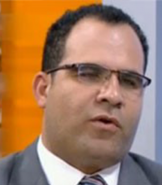A week before the outbreak of the war in Ukraine, Russia conducted military exercises in Belarus, in parallel with military exercises in Syria’s Port of Tartus, in the presence of Defense Minister Sergei Shoigu, in which 15 warships participated. Moscow sent hypersonic Kinzhal missiles, and 30 strategic MiG-31 fighters and Tupolov TU-22-M long-range bombers to its air base in Hmeimim, Syria, for which the air and naval bases had been prepared last year. Although Syria is not directly involved in the Ukrainian war, these upgrades raise questions regarding the extent of Russia’s military investment in its presence there.
The importance of Syria’s location for Russia is well recognized, as it fits into the logic of Russia’s definition of its sphere of influence, and allows it access warm water ports. Russia has also benefited from the military experience of more than seven years of operations in Syria, especially regarding urban warfare. Russia expanded the scope of its presence there by relying on the air force, and the use of artillery on a large scale. It imposed its rules of engagement on competing powers, Turkey, Iran, and Israel, and conducted extensive testing of its weaponry.
The West viewed Russia’s activities in Syria with much less alarm than Russian military operations in Ukraine, which are considered far more threatening strategically. Paradoxically, Russia has justified its presence in Syria in terms of protecting its territorial integrity and sovereignty, while its intervention in Ukraine is based on very different logic, and in fact infringes on the sovereignty and territorial integrity of that country.
The latest Russian military maneuvers in Syria follow similar maneuvers conducted a year ago, in March 2021, in the country’s north and northeast regions. Last year’s maneuvers, however, occurred in the context of different domestic arrangements, and in coordination with the Syrian Democratic Forces (SDF) militia. The SDF is aligned with the United States, while Turkey regards it with hostility, and therefore viewed these joint maneuvers negatively in terms of Ankara’s understanding with Moscow. This year’s maneuvers set a precedent as they were an exclusive mobilization of the Russian military on foreign soil. It can be deduced that these maneuvers were in preparation for the military operation against Ukraine, with a number of possible objectives, including:
A display of military power, which complements the operations in Ukraine, and their possible trajectory, should the situation get out of control. It may be regarded as preparation for such eventualities, especially in light of the full deployment of the US Sixth Fleet in the region. Washington has bolstered this presence by sending the Harry Truman nuclear aircraft carrier, which is currently stationed in the eastern Mediterranean.
Second line of defense: The upgrades in Syria are part of Russia’s preparations, as its military bases in the eastern Mediterranean can provide support to Russian forces on the front lines, and can deploy to the country’s southwest, in addition to the Black Sea region.
A possible widening of confrontation: If the confrontation with the West expands, Russia may use its forces stationed in Syria to deploy to other possible theatres. Syrian Foreign Minister Faisal Miqdad signaled his country’s support for Russia, comparing, on February 13th, the West’s stance against Russia with its stance against Syria. Syria voted against the UN General Assembly resolution on March 2nd, which condemned the Russian military intervention in Ukraine.
Augmenting sphere of interest: Russian military doctrine views deployment out of Russian territories, as it is deployed in Syria, as a means of preserving Russia’s sphere of interest, which is vital to its security. Russia views Ukraine as essential to the preservation of this sphere of interest, in its confrontation with NATO and Western countries in general.
Such objectives may however confront certain challenges, including:
Geopolitical constraints: Russia’s ability to draw on its resources in Syria to support its military operations in Ukraine is dependent on Turkey’s willingness to allow Russian air and sea movement. The restriction of passage to the Black Sea, or a possible closing of Turkish airspace to Russian aviation, would leave Russian forces in Syria isolated, reducing their strategic importance. To avoid Turkish airspace, Russian fighters would have to cross Iraqi, Iranian, Armenian, and Georgian airspace, an unsafe distance to travel, that would triple travel time.
The balance of power: The current maritime balance of power in the European theatre is not in Russia’s favor, in view of reinforcements for the US Sixth Fleet, and the support it will receive from European navies as well. However, Russia may not be constrained by such calculations, and may decide there are gains to be made by a show of force in the eastern Mediterranean, from its ships, missiles, and submarines, especially if Russia carries out the first strike.
It can be argued that Russian bases in Syria now figure into Russia’s calculations regarding projecting its power outside its borders, with the aim of restoring its position in the international system. Russia’s bet on Syria has yet to be tested, and its strategic value, in the event the war in Ukraine spirals outside the borders, may be confronted by many challenges.


